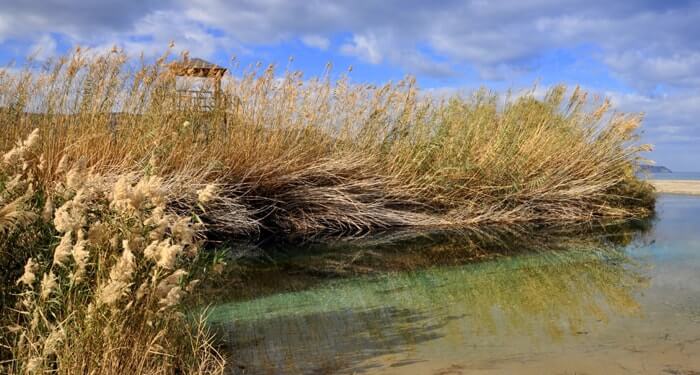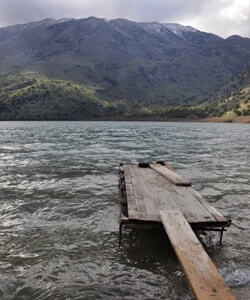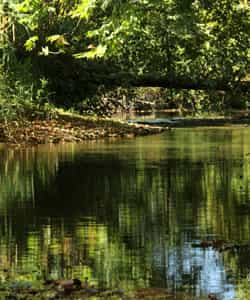Crete has limited water resources, due to its geographical location and weather conditions. Dams and artificial reservoirs have been built at several sites of the island in order to meet the increasing needs for water supply. After their construction, all of them soon were transformed into very important wetlands, enriching the biodiversity of the island.
The largest natural lake in Crete is located at Kournas near Georgioupolis, where visitors can watch birds from the local watch tower. Small but important natural ponds with water all year round are also located at Tersanas by Chania, at Mohos and Thrapsano while seasonal ponds are met at Orne, Parakalouri, Ziros, Omalos by Viannos, Achendrias, Stroumboulas, various plateaus of the northern province of Mirabello, Gergeri and at several more places. Artificial lakes where one can observe birds are located at Ayia by Chania, at Votomos by Zaros, at the large dams of Bramiana, Aposelemis, Faneromeni, Potami and the numerous small dams in the hinterland of Heraklion.
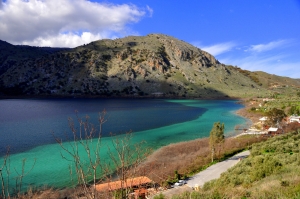
Lake Kournas and its surroundings constitute a very important ecosystem for Greece. Kournas is one of the very few areas of Crete where plenty of fresh water is stored throughout the year. For this reason, it is protected under the Natura 2000 program.
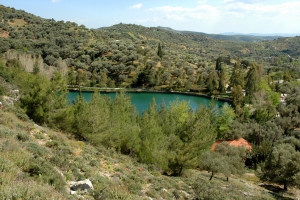
The artificial lake of Zaros or Votomos is located on the southern slopes of Psiloritis, just 1km north of Zaros and 45km southwest of Iraklion. The area was a small wetland before 1987, which was shaped in the crater of Votomos Spring. It took its current form in 1987 when the Forest Service created an artificial lake where the spring water is stored.
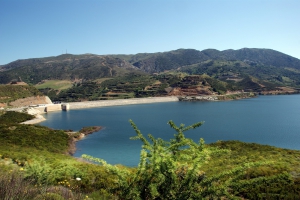
The quite new lake has a capacity of 23 million cubic meters and is expected to become one of the most important wetlands in the southeast Mediterranean. Already, many species of birds and animals have appeared in the area. Visitors of the wider area visit the dam and admire the beautiful scenery.
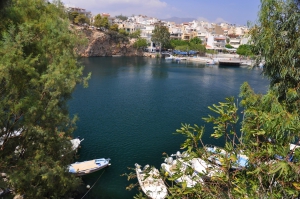
Trademark of St. Nicholas is the picturesque Lake Voulismeni, a small lagoon in the center of the town, used as a small harbor where fishing boats stop. Dozens of legends are associated with it, mainly because of its very deep waters (e.g. that it has no bottom).
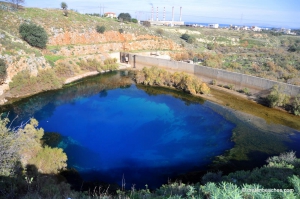
Almiros spring can probably most satisfactory explain the term paradox. This spring is located at the northeastern side of Psiloritis, a few hundred meters far from the sea and the city of Heraklion, and it runs off the highest water quantity in Crete directly into the sea through the homonym river of Almiros! The water of the spring is brackish because somewhere quite deep it is mixed with seawater.

The dam of Aposelemis river was a very tough project that was eventually completed in 2012. At the bottom of the lake there is the village Sfendyli, the few residents of which were moved to another place.

The artificial lake of Agia (Ayia) is located near the village of Agia, 9 km west of Chania. It is a small lake of 450 acres, which is close to the valley of Fasas. This valley is considered as the most humid of Crete. Agia lake receives water from underground springs and the river Xekolomenos.
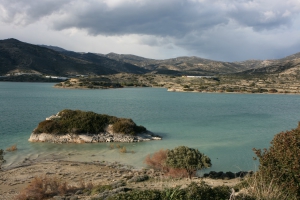
The artificial lake of Bramiana was built in 1986 at Bramiana to meet the 30.000 of the greenhouses of Ierapetra. It is located 5km northwest of the town, in the road connecting Ierapetra and Kalamafka village. The lake covers an area of 1050 acres and has a capacity of 15 million m3, making it the second largest wetland of southern Greece, after Potami Dam at Amari valley.






